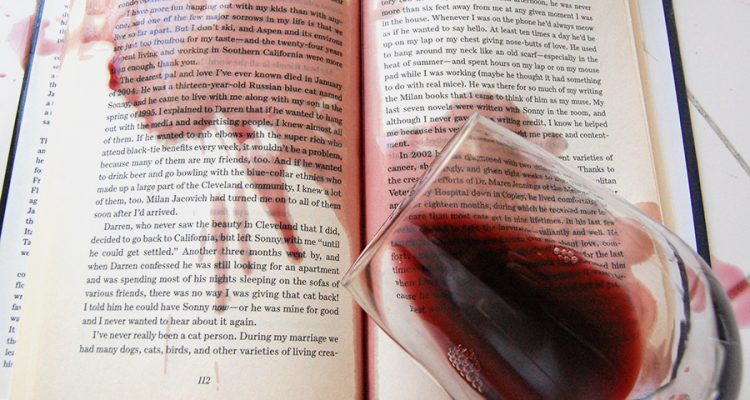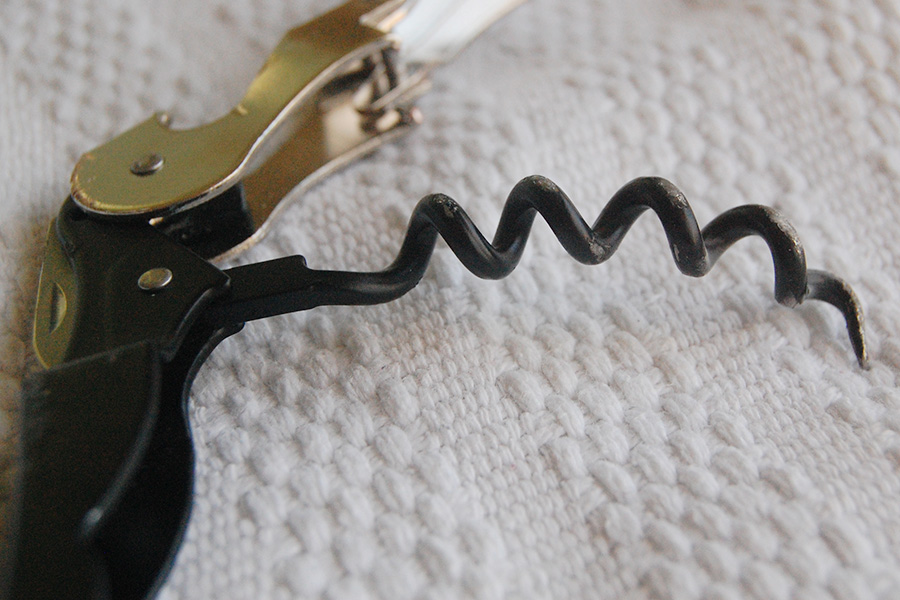In wine, there is an ideal version of the experience – and then there’s the reality. Rarely are the two identical. I’ve had plenty of awkward moments over the years; the four examples below are just the tip of the iceberg, for me. I’ve also seen seasoned professionals break expensive glasses, trip and dump a full glass of wine on a painting, and, during one memorable wine tasting, witnessed the host’s dog hop up on the table and consume a half pound of duck paté.
Learn to laugh, accept that you’ll get a few purple stains on your clothes over the years, and roll with the punches that Bacchus delivers.
There are four stages to enjoying wine. In a movie or novel, all four of these are elegant processes, and nothing ever goes wrong.
Stage 1: Purchasing the Wine
IDEAL VERSION: You go to your favorite store, full of polished wood floors and a climate controlled cellar in the back. The owner is a wizened collector and the staff is comprised of enthusiastic young wine experts who are happy to talk about Trebbiano vs. Vermentino all day. Unobtrusive jazz plays in the background, and you see other customers dropping hundreds of dollars per transaction. You know you’re in the right place.
REALITY: During my days as a traveling corporate trainer, I’d often look for a nearby wine shop so that I could try some brands, grapes, or regions that weren’t available back home in Memphis. I had a lot of success with this, and got to build up a lot of eclectic tasting experience. Once, while staying in Toledo, Ohio for a few days, I searched online for the nearest wine shop and was pointed to a little lakeside store just across the Michigan border.
Upon entering the establishment, I discovered that this was a store that gave equal space to three retail categories: alcoholic beverages, pornography, and live bait. On top of that, everything looked about two decades out of date (except for the night crawlers). I was getting a weird vibe from the clientele who appreciated being able to take care of all of their important shopping in one convenient spot and didn’t mind the constant chirps of crickets ($5 for a tub of 100). But that weird off-brand Merlot wasn’t too bad with a turkey sandwich back at the hotel.
TAKEAWAY: Living a life of travel often means finding ways to surround yourself with civilization even in alien environments. I often found the routine of opening a bottle of wine and enjoying a glass out of a paper-topped tumbler (or from a wine glass I swiped from the hotel bar) reminded me that I was not just a cog in a machine; instead I was allowing myself to enjoy my passions while far from home. Even if I was not able to surround myself with fellow wine fanatics, I could revel in the simple joys of opening a new bottle and evaluating it while watching snow fall in the Great Lakes.
Stage 2: Opening the Wine
IDEAL VERSION: In your best guise as host-sommelier, you grasp the bottle, trim off the foil, and insert the opener and remove the cork with nary a drop falling down the side of the label.
REALITY: Since I love to cook and often have wine to taste at home, I’ve hosted a lot of dinner parties and enjoyed dinner dates at my place rather than going out to a restaurant. On a memorable first date ten years ago, I only had one corkscrew, an overly complicated variation in the wing style that was a gift from my boss at the time. When I went to open the bottle, only half of the cork came out, and on the second attempt, the corkscrew completely fell apart and could not be repaired. Thoroughly embarrassed, I ended up digging out remnants of the cork with a knife and had to pour the wine through a mesh strainer.
TAKEAWAY: Practice. At any given time, I have a few hundred corks sitting around, resting in a cardboard box – looking like they’re waiting for their cameos on a reality show about hoarders. But when I have a dinner guest who expresses an interest in getting better at opening bottles of wine, I will grab an assortment and a corkscrew and plug up a few empty bottles.
“Remove the synthetic cork. Again. AGAIN!”
“Here is an old brittle cork that is 20 years old. I am going to let you destroy this in a safe environment.”
Especially with sparkling wines, I often have to tell people that sometimes the cork removal process is more of a conversation: you need to pay attention to how the cork is acting. To simply charge in is not always the best approach.
Stage 3: Selecting the Proper Glassware
IDEAL VERSION: You have a large antique cabinet that holds many fine crystal glasses, and you use separate styles for Bordeaux and for Napa Cabernet.
REALITY: In 1996, I spent three weeks in Italy over the holidays with my college girlfriend. It was a magical trip, and I loved enjoying a glass of wine with dinner every night, often poured from a little ceramic jug rather than a bottle. (It was also the last time that I simply enjoyed wine without taking notes and thinking about the specific bottle, but that’s a story for another day.) My flight back was on New Year’s Day, and on the hop from Milan to Amsterdam I was awakened by the flight attendant and presented with a gift bottle of Champagne, covered in ribbons. I had a layover in Schiphol Airport for a few hours in the middle of the day. At some point it dawned on me: I was only twenty years old, and might have to surrender the Champagne upon re-entering the United States.
I had a few guilders in my pocket (this was pre-Euro), and after walking around for a bit, I only had one option. Tired, hungry, and not wanting to exchange any more currency, I walked up to the Burger King counter, ordered a Whopper and fries, and said, “Could I please have an empty cup?” There I sat, drinking warm Champagne out of a wax-lined paper cup while chowing down on airport fast food, celebrating the New Year. I found myself lamenting a long-distance relationship that I didn’t know was going to end in a month.
TAKEAWAY: Get over it. For years, Champagne to me was associated with sadness, the last leg of a carefree holiday vacation, eight hours before returning home to Memphis, school, and having to find a job. I have since built many more happy memories on sparkling wine from many different appellations (but somehow the darker moments of that trip never impacted my love of pommes frites and mayonnaise).
Stage 4: Studying and Savoring the Wine
IDEAL VERSION: You do a careful swirl and sniff, hold the glass against a white background to evaluate the color, slurp a bit, and look at an indefinite point on the wall while contemplating what the weather was like when these grapes were grown.
REALITY: Early in my wine self-education, I would often open a bottle on Saturday afternoon with lunch, and would take notes on it. In fact, that’s how I started wine writing back in 2005. One sunny August day, I had been up for hours working in the yard. Mowing the grass, turning the compost pile, giving my beloved heirloom tomato plants a fresh bed of mulch and manure, etc. After the day’s chores were done, I planned on grilling a steak and enjoying a California Pinot Noir. I washed my arms and face, and decided that I might as well go ahead and eat since getting covered with smoke from the grill would make a shower pointless. Besides, I thought, I’m about to enjoy a hearty rural lunch in the spirit of French farmers. No need to get dressed up for the wine, I’m going to keep this rustic and authentic.
The ribeye was delicious, particularly with a big plate of Cherokee purple tomatoes that I’d been carefully nurturing for months. Sea salt, black pepper, and an appetite built up from an honest day’s work made everything taste great. The wine, on the other hand was completely neutral. It didn’t smell like anything, didn’t taste like anything… it might as well have been water. I was disappointed, but poured the rest into a decanter in case it would open up over time.
Two hot showers, a nap, and a fresh change of clothes later, I returned to the wine to see what it was like. Then I discovered that it was corked worse than any wine I’d encountered before or since. It was so bad that the taint was detectable from an arm’s length away, and a proper sniff was stomach churning. Because I’d previously tasted it while surrounded by the aromas of compost, manure, gasoline, beef grease, charcoal smoke, and grass clippings, my nose had acclimated and could not detect the classic TCA spoilage.
TAKEAWAY: Let it go. There will be many moments in your life of wine appreciation that will not conform to the ideal of an ad in a prestigious magazine. Do not seize on the shame and embarrassment; know that many have gone before you and have had far more ridiculous things happen around a bottle of fermented grape juice.



